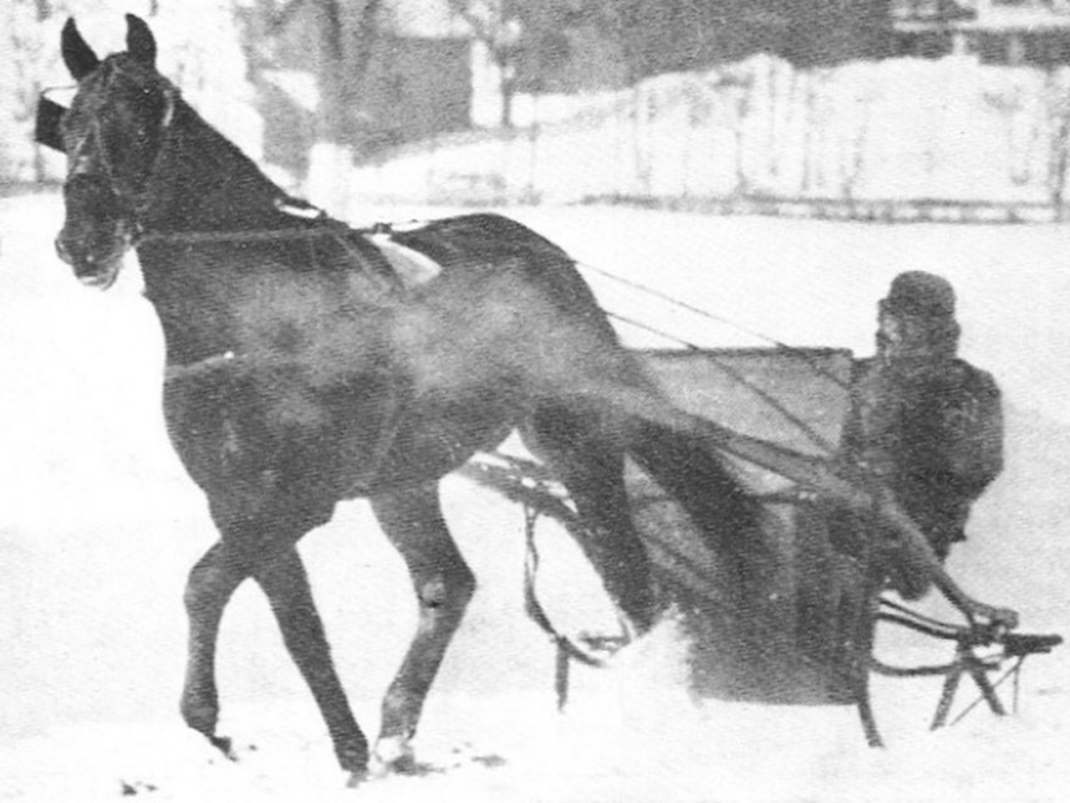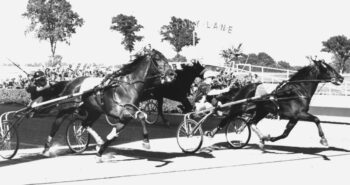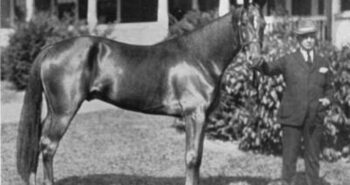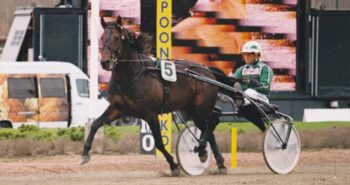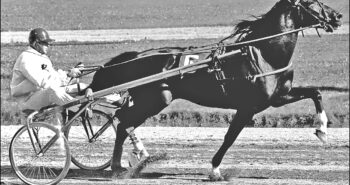He was talented but a contagious virus ruined his three-year-old season. Being sold to Europe got Bulwark’s career back on track but it was as a stallion he became truly legendary. Despite a relatively limited number of foals, the colt completely dominated the stallion ranks in his new home country.
Bred by Walnut Hall Farm, Bulwark was bought by Walter Cox at the Old Glory yearling auction in late November 1934 for $1,225. According to newpaper reports he did so on behaf of William Cane’s Good Time Stable. It’s lost to history whether that was incorrect or if Cane changed his mind, but two months later Bulwark was listed as owned by New York industrialist Israel O Blake. It’s most likely the reporting was incorrect because Blake also used Cox as his trainer. Regardless, the colt showed talent early. On May 6, 1935 it was reported that “Walter Cox has the highly regarded Volomite two-year-old Bulwark at the 2:35 (1.36,3) stage.” Three weeks later, “Walter Cox has his two-year-old trotters at the 2:20 (1.27) stage. The Volomite colt, Bulwark, is still the choice of a majority of the Goshen colony.” In The O’Brian Trot at North Randall in mid-July, Bulwark finished fifth overall after placing 3-5 in the two first heats. This wasn’t a surprise: Cox stayed “up north” in Goshen during the winter and at the beginning of each season, his two-year-olds were almost always lagging a little behind the many that had their winter training in the south. Many of the leading two-year-olds were trained by Ben White. Best of White’s 1933 crop was the mare Rosalind, who easily beat won Bulwark’s next race, at the Thorncliffe track in Toronto, in two straight heats ahead of stablemate Ed Lasater.
A talented two-year-old
Cox, and the trotting world, were not downbeat about the initial loss however. According to the Cincinnati Enquirer on Aug 4, 1935, “Walter Cox has a pair of two-year-olds in his stable which he is bringing about carefully, and which are likely to be troublesome during the latter half of the season. One is a brown colt called Bulwark, a son of Volomite, which won the 1928 Futurity and the following season beat the best aged stake trotters in the Oak stake. This colt has raced a couple of times and is showing much improvement. The other colt is Steadfast, a giant youngster, son of the great Protector. This colt has yet to start, but Cox is very high on him. Cox always winters his stable in the North and his two-year-olds are seldom prominent in the early races, but have furnished plenty of upsets in the fall. Sam Williams in 1923, Fireglow in 1927 and Walter Dear and Volomite in 1928, were juniors trained in the Cox kindergarten at Goshen.”
Bulwark was indeed improving. On Aug 20, he won a two-year-old trot in two straight heats, winning in 2:10 and 2:12 1/2 (1.20,8 and 1.22,3), over the half-mile track at Middletown, N.Y. Shortly after Cox considered that Bulwark had the making of one of the fastest trotters he had ever developed. On Sept 19, the Lexington Herald-Leader reported that Cox and Bulwark had worked a mile in 2:07 (1.18,9), half in 1:01 1/2 (1.16,4). His fastest mile of the year came at Lexington when he trotted in 2:06 1/4 (1.18,5) when second to Ed Lasater in The Lexington Stake on Sep 26. Ed Lasater was good, maybe the best colt born 1933, but he still took a backseat to the fantastic female trio of Rosette, Ruth M Mac and Rosalind, who dominated the crop at 2.
A ruined season
Not close to touching Rosalind in 1935, Bulwark was considered an outsider and seen with a limited chance of winning the Hambletonian when the winter book odds were released in late January 1936. Bulwark, Pinero, Recovery, Balbo, Hollyrood Lydia and Gaiety Mite were all listed at 8 to 1, behind Rosalind at 2 to 1, Rosette at 3 to 1, Ruth M Mac at 4 to 1 and Prince McElwyn at 6 to 1.
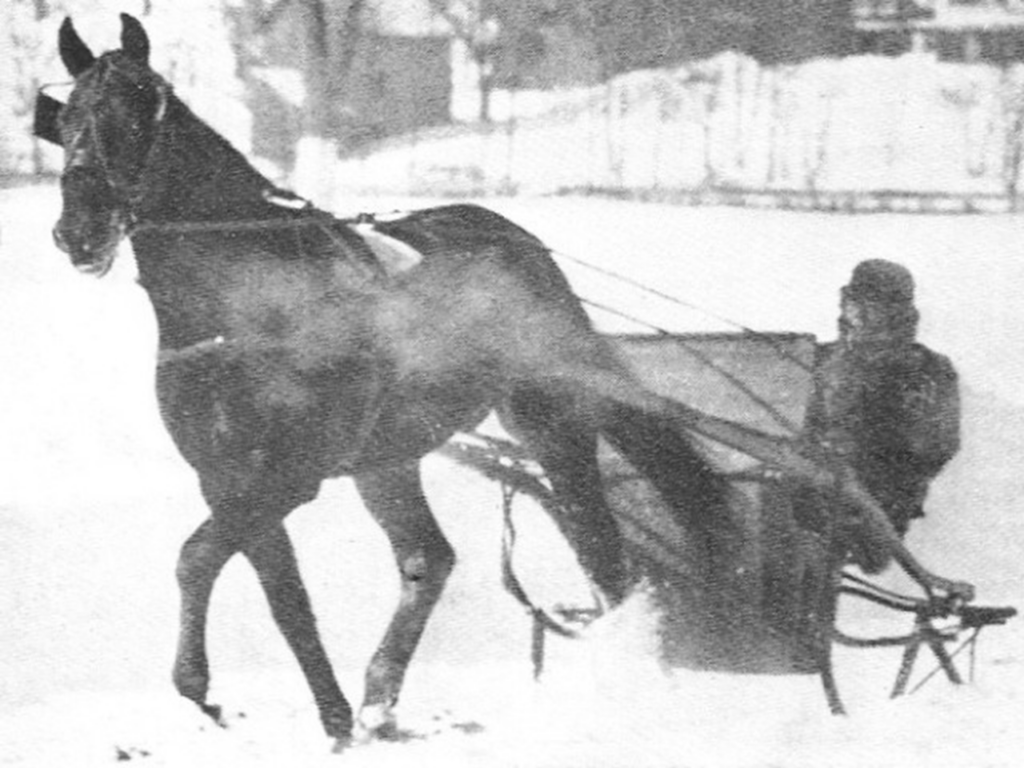
However, while everything looked to be on track from the outside, something was wrong with the colt. Toward the end of his 2-year-old campaign, Bulwark had suffered a bad case of strangles, but the media hadn’t picked up it. In the Boston Globe on Jul 13, 1936, it read that “Walter Cox has three Hambletonian candidates which are at the 2:10 stage of their preparation. Steadfast was given a record of 2:10 1/4 (1.21,0) last Tuesday, Masterpiece one of 2:10 3/4 (1.21,3) and Bulwark trained in 2:11 (1.21,4).” It soon became evident that something was amiss, though, as Bulwark skipped the Tuxedo stake at the Grand Circuit meet in Goshen. The race was one of the final preparatory races for the Hambletonian and was won by Ed Lasater. Bulwark, on the other hand, made his seasonal debut in a the consolation three-year-old trot at Goshen. Only two horses started, Harris Noon and Bulwark, and the former won all three heats in 2:16 1/4, 2:19 1/2 and 2:08 (1.24,7, 1.26,7 and 1.19,6). According to the newspaper reports “the three-year-old consolation trot had but two starters and was won by Harris Noon from Bulwark of the Cox stable. He was an easy winner of the first two heats in slow time, but in the final was driven for a record and trotted in 2:08.” The win was on the final day of the Grand Circuit meet at Goshen, after which the trotters shipped to Old Orchard Beach in Maine.
“An ugly black one”
However, Bulwark didn’t ship to Maine. Instead, Cox decided enough was enough and stopped training the colt because of the effect of the strangles infection. The highly contagious bacterial disease affected Bulwark unusually hard. Instead, in November he was consigned at the 42nd Old Glory auction and listed as hip 260. The owner’s statement read “Everybody knows what Bulwark did as a two-year-old, trotted a lot of heats in 2:05 1/2 to 2:06 1/2 (1.18,0 to 1.18,6), raced against the best colts and was always a contender, had extreme speed and all the race qualities a horse could have. He was a Hambletonian prospect or at least a lot of people that saw him thought so. He was taken sick in the fall and nearly died, while he got better it affected his throat. We trained him up to July, he was very poor, did not look like the same horse, went in 2:08 (1.19,6), half in 1:02 (1.17,1). I did not think he would get good enough to race in the stakes. Rather than abuse him and ruin him forever I quit with him. He is fat now. Looks good and feels good. Has got a chance to make somebody a real good horse. Was never lame, one of the nicest horses I ever had anything to do with.”
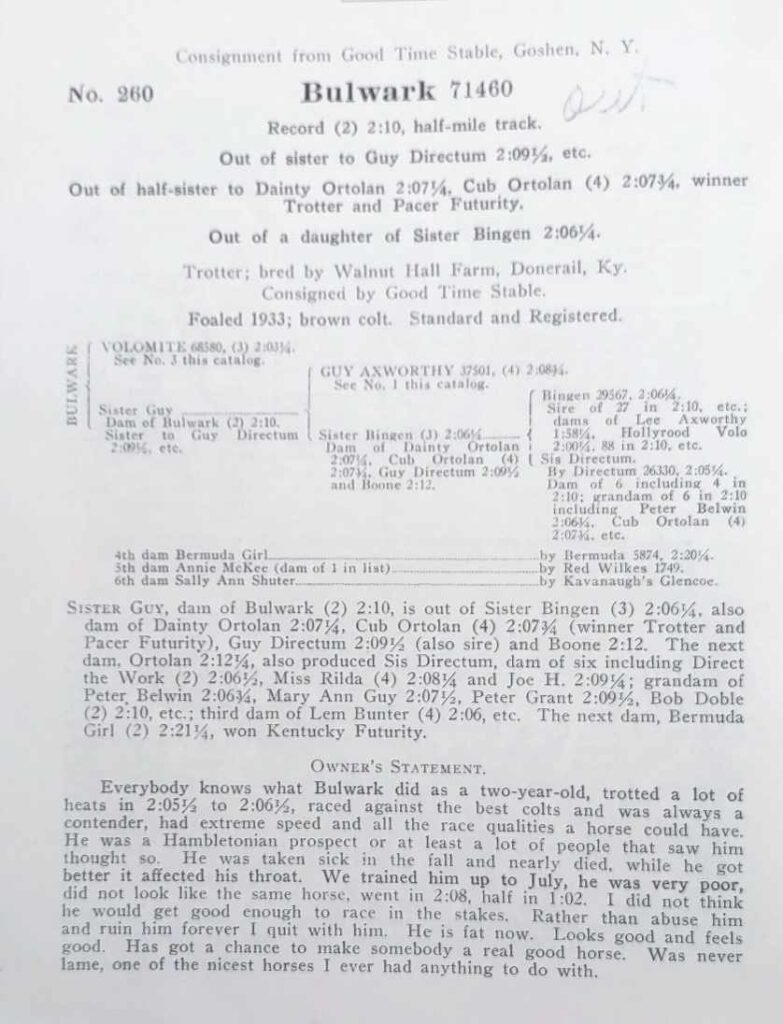
However, the three-year-old colt was an out at the auction, as was his two-year-old stablemate Charlie Mills, a full brother to Walter Dear. A few days later, at the end of November, it was reported in newspapers that Cox had sold Bulwark and Charlie Mills to Germany. However, as it turns out, that was a factual error; the horses were off to Sweden. On the way to Sweden was also Poplar Hill 2:02 1/2 (1.16,1), who auction records show were bought for $1,500 by Neil Anderson of Goshen. However, Neil Anderson was just the Americanized name of the Danish second trainer at Good Time Stables, Jeppe Andersen, a son of Danish trainer Hans Andersen. This explains why Bulwark, Charlie Mills and Poplar Hills were all purchased together by Swedish buyer Harald Andersson. It is unclear if Bulwark was forced onto the Swede in the transaction as a condition for buying Poplar Hill, but what is known is that Andersson, in New York with trainer Peder Paul Nielsen, sent a postcard home to Sweden with the text “we have bought a fantastic horse named Poplar Hill and an ugly black one called Bulwark.”
One of the best of all times
Bulwark was shipped to Sweden and arrived in Gothenborg in mid-December. In Europe the horse raced for trainers Peder Paul Nielsen, Sören Nordin and Filip Noren with success, and the colt was one of the better aged horses in Sweden in the years before and after 1940. His biggest wins came in the 1938 and 1942 C Th Ericssons Memorial. Bulwark raced until he was 11 in Sweden, finishing 27-18-20 in 113 Swedish starts. However, it was as a stallion he became legendary.
In his first full year in Sweden, at 4 in 1937, he bred a few mares, and the following year he got five foals. In his second crop he produced his first classical winner, Silver Princess. Two year later the star Balett, second in the Criterium and Derby, as well as three-time Swedish champion, was born. In total the stallion had 241 foals in Sweden. Five won the Svensk Uppfödningslöpning, the biggest race for two-year-olds, two won the Kriterium, the biggest race for three-year-olds, and three won the Derby, the biggest race for four-year-olds, in Sweden. Ten classical wins, all by different horses. However, it was two other foals that were the real superstars: Frances Bulwark and Carne, winners of the Elitlopp in 1953 and 1954, respectively.
Bulwark is by some considered the best stallion of all times in Sweden and by all as the best stallion of his era. The colt died on May 31, 1954 and was inducted into the Scandinavian Trotting Hall of Fame in 2010. The colt was buried at Jägerso racetrack’s horse cemetery.
bulwark
Brown colt born in Lexington, KY in 1933. Died in Sweden on May 31, 1954.
Volomite – Sister Guy (Guy Axworthy)
121 starts: 28-19-20 – Fastest win: 1.18,8 (2:06.4) – Fastest time: 2,:06 1/4 (1.18,5) –
$1,529 + unknown Swedish earnings
Breeder: Walnut Hall Farm
Owners: Walnut Hall Farm – Israel O Blake – Harald Andersson – Martin Eklund, Klas Andersson & Gunnar Andersson – Nils Bengtsson
Trainers: Walter Cox, Peder Paul Nielsen, Sören Nordin and Filip Noren
Drivers: Walter Cox, Peder Paul Nielsen, Sören Nordin and Filip Noren and others
Grooms: Folke Eriksson and others

